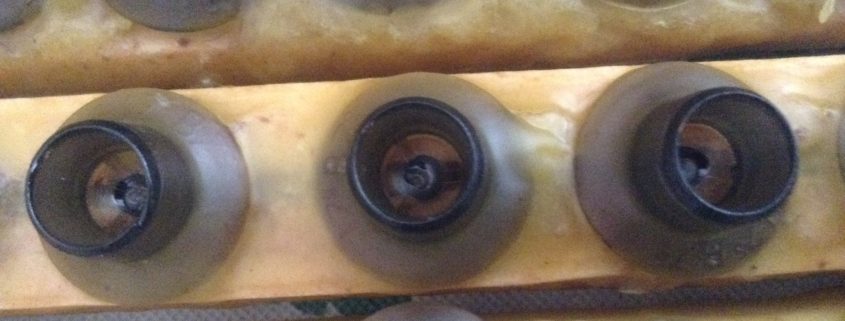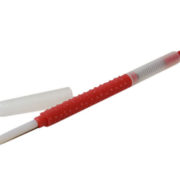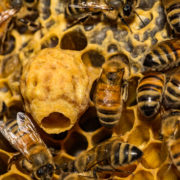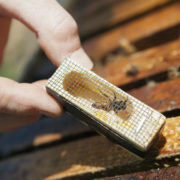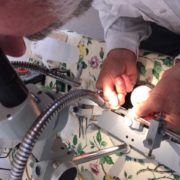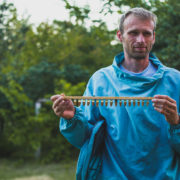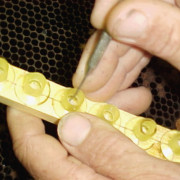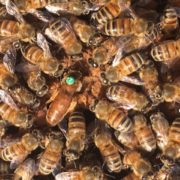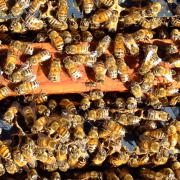Young Larvae
When you look at a healthy young queen bee, it is sometimes hard to imagine that only a month or so earlier, she was actually not recognizable as a bee, but rather existed as a larva. For the first four to five days after emerging from an egg, a future queen bee is a larva, which is helpless and must be cared for and fed by other bees. For these four or five critical days, the worker (nurse) bees feed the larva generous servings of royal jelly. The size and health of the future queen is directly dependent on both the quality and quantity of the royal jelly that the larva receives during this brief and critical time window.
Each larva has a life span of only about four and half days between the time that it hatches from an egg to the time that the surrounding bees seal it and it begins its transformation into a pupa, eventually becoming a queen bee. Therefore, a conscientious queen producer needs to take as many steps as possible to ensure that each and every queen larva is well cared for during this vital metamorphosis period. Well-fed and well-nourished larvae result in high quality queen bees.
In order that each larva receive the maximum amount of royal jelly during its brief life, a good queen producer will graft larvae that are young; as close to egg emergence as possible. Older larvae are already too far into their four-day window to receive the maximum quantity of royal jelly needed during their short lifespan as a larva. A young grafted larva will receive a full four days of royal jelly feeding before it is sealed, whereas a two day old larva has already missed out on up to two days of royal jelly and has only two days left to be fed before it is sealed.
Once the young larvae are grafted, they are placed into cell building colonies that are packed with healthy and well-fed nurse bees. Having a strong cell building colony ensures that the larvae will be well-attended and abundantly fed from the time that they are placed into the cell builder cups until the time they are sealed shut.

